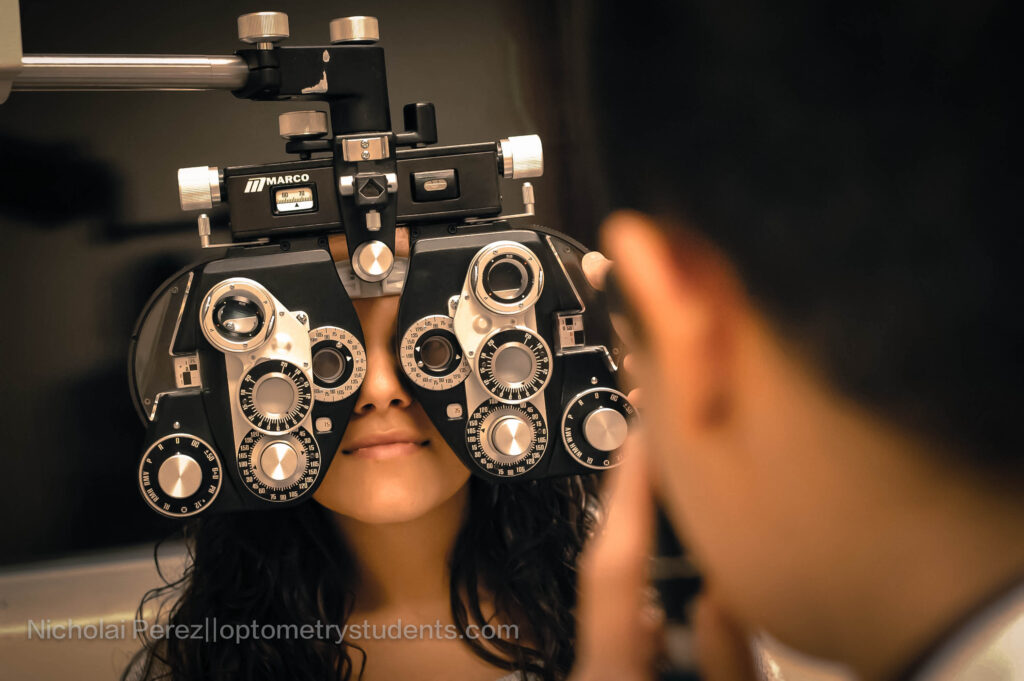Put Down the Devices, Prevent Eye Strain

As I spend extended amounts of time on my computer, my eyes are aching and burning. My phone feels so bright and my eyes are straining after looking for a long time. Over the past few decades, there have been numerous advancements in personal electronics. However, these advances come at a price.
Computer Vision Syndrome (CVS) is a recent eye condition that is sweeping the nation and may be contributing to myopia, according to the American Optometric Association.
What is Computer Vision Syndrome?
Computer Vision Syndrome is defined as the eye strain a person experiences after the lengthy use of digital devices. Computers and digital screen devices come with a high visual demand which makes individuals vulnerable to this condition. Examples of digital devices include computers, mobile phones, tablets, and back-lit e-readers.
Symptoms
 The symptoms of can vary, but the most common include:
The symptoms of can vary, but the most common include:
- Dry eyes due to the reduction in blink rate when viewing a digital device
- Headaches
- Blurry vision
- Fatigue
- discomfort or soreness in the eyes, back, neck, or shoulders
Whether the patient is a child or an adult, digital eye strain symptoms do not differ. However, children are more likely to develop myopia because of the increase in indoor activities, specifically engaging in digital devices. In order to diagnose Computer Vision Syndrome, patients should have a full comprehensive eye exam.
Prevention and Treatment
As far as we know, Computer Vision Syndrome is a manageable condition. The key for adults and children living in a digital world is to create good habits.
- The computer screen should be placed at least 20 inches away
- Digital users can follow the 20/20/20 rule. For every 20 minutes using a computer ordevice, look at something 20 feet away for 20 seconds.
- Check the lighting of the room and screen and make sure to always sit in a comfortable position
It is important for digital device users to have regular eye exams. Sometimes correcting a refractive error with glasses can help reduce the symptoms. Another way to treat computer vision syndrome could be through structured vision therapy programs.
What Research Has Been Done?
A 2011 study from SUNY College of Optometry determined a few factors relating to Computer Vision Syndrome. Those factors included an inappropriate oculomotor response, an inaccurate accommodation response, and dry eye syndrome.
An article from Yan et. al gives more information. Our eyes experience relaxation when looking at a distance. However, when focusing closely, the eyes need to use their muscles. This discovery led researchers to believe that this new phenomenon of computer vision syndrome is related to doing near work at computers. Spending long hours at a computer or doing up-close work on back-lit devices can cause symptoms to appear.
What’s Left to Discover?
In the past few decades, digital devices have advanced in a way that has negatively affected our eyes. What we do know is that eye strain and myopia are the main symptom of Computer Vision Syndrome. What we do not know is the long-term effects on the retina due to these devices. Longitudinal research is extremely important in order to understand the long-term effects on the upcoming generations, if any.
Sources:
Rosenfield M. (2011) Computer vision syndrome: a review of ocular causes and potential treatments. Ophthalmic Physiol Opt 2011, 31, 502–515. doi: 10.1111/j.1475-1313.2011.00834.x
Yan, Z., Hu, L., Chen, H., and Lu, F. (2007) Computer Vision Syndrome: A widely spreading but largely unknown epidemic among computer user. Computers in Human Behavior 24 (2026-2042)


